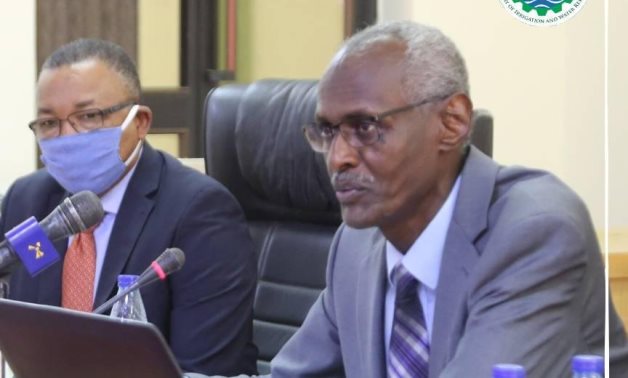
Sudanese Minister of Water Resources and Irrigation Pro. Yasser Abba- press photo
CAIRO – 23 April 2021: In case that Ethiopia unilaterally starts the second phase of filling the reservoir of the controversial Grand Ethiopian Renaissance Dam due mid-July, Sudan will file lawsuits against the Italian executing company, Salini Impregilo (rebranded as Webuild Group), and against the Ethiopian government, to compensate for the damages that will be caused by the phase process.
“In case of completing the second filling without a binding legal agreement, we have Sudanese legal teams working with the help of international law firms to file lawsuits against the Italian executing company and against the Ethiopian government, to compensate for the damages that will be caused to Sudan,” said Sudanese Minister of Irrigation Yasser Abbas in an interview with Sudan Channel on Thursday.
He added that Sudan is considering other options, such as resorting to the International Court of Justice, human rights courts and the COMESA court, saying that that his country has taken precautionary measures by storing more amount of water head of the second filling.
He continued that reaching an agreement does not relinquish the sovereignty or rights of Ethiopia, saying that Ethiopia rejected Sudan’s invitation for a tripartite summit for the heads of the three countries.
“The African Union is biased to the Ethiopian side to some extent,” he said, noting that the African Union’s role is supervisory not leading.
In mid-July 2020, Ethiopian authorities unilaterally carried out the first phase of the filling process with 4.9 billion cubic meters; and it is expected that the second phase of the filling would reach 13 billion cubic meters.
The dispute among Egypt, Sudan, and Ethiopia dates back to May 2011 when Ethiopia started building the dam; Egypt voiced concern over its water share [55.5 billion cubic meters].
In 2015, the three countries signed the Declaration of Principles, per which the downstream countries should not be negatively affected by the construction of the dam, whose capacity is 74 billion cubic meters and is planned to generate 6,000 megawatts per annum through 16 turbines.
Comments
Leave a Comment